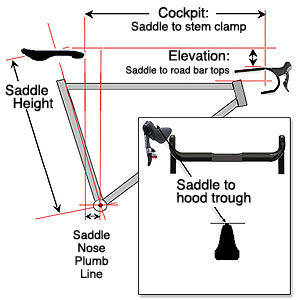
Retul announced today that it has “accepted a strategic investment from Specialized Bicycles.” Specialized CEO Mike Sinyard referred to the intersection between his company and Retul as a collaboration. However, our reporting indicates that Retul is now chiefly or entirely owned by Specialized. Retul is a Specialized brand. The investors Retul has had in the past, which include a medical devices company that provided the industrial basis for Retul’s product and intellectual property; and Selle Royal, who invested in the company last year; are now out, and Specialized is in.
This makes the messaging touchy, as Retul has tried hard to remain “ecumenical” since its inception in 2007. Independent bike dealers—a network for which there is no bigger champion than Mr. Sinyard—include those who don't buy Specialized bikes. Will they balk at the idea of buying a Retul system if Specialized is behind it? Probably not, if in that dealer’s mind Retul’s tools represent the most robust fit solution at the most palatable price. Retul will not likely face much opposition to its products just because of the Specialized connection.
It is not just Retul that must massage the messaging carefully. Specialized has sold its popular Body Geometry process as one not needing the fit tools such as those Retul makes—most notably Retul’s crackerjack fit bike and its industry leading motion capture system. That established, the past is the past, and the tools Specialized now has in its tool chest will supercharge the Body Geometry process for those Specialized IBDs that avail themselves of up-to-date technology.
Specialized is a leader in dealer training among flagship bike brands, and for a decade its SBCU curriculum has trained dealers in what one might call “process driven transactions.” The Body Geometry process is an integral part of SBCU, and SBCU’s Global Program Manager, Scott Holz, is a fitter by trade. Holz himself recognizes the value in what he calls “clockwise” transactions, where a fit process leads to fit coordinates and subsequently to the selection of the right bike, rather than choosing a bike and then deciding how to best fit aboard it. Fit bikes like the one Retul developed last year will help Specialized dealers use Body Geometry protocol to execute a “clockwise” transaction.
Still, some IBDs do face a question of protocol. The company line inside the SBCU is that the fit protocol—how one settles on a set of fit coordinates, and how those coordinates are ported into an equipment solution—is a Body Geometry protocol, even when used with and aboard a Retul fit bike, and/or with a Retul motion capture system. However, Retul has a somewhat divergent fit protocol, both for road and tri. Therefore, IBDs that have ties both to Retul and Body Geometry will have to decide which protocol suits them. The elegance of fit tools like those Retul makes is that they can be used for a variety of protocols: Body Geometry, Retul, and the F.I.S.T. protocol we teach, among others.
While the Body Geometry curriculum must find a way to absorb the new dynamic fit tools Specialized now owns, perhaps altering in some measure the Body Geometry protocol, Specialized also sells to a lot of IBDs that are not now, nor will ever, have a fit studio that includes dynamic fitting tools. Therefore, the Body Geometry protocol they now teach is inclusionary when seen through the prism of the wide swathe of IBDs to which Specialized sells its bikes.
What is not known is whether there will be special incentives to buy these tools for existing Specialized dealers. Or, whether rebates or discounts might be tied to preseason bike orders, or sales totals reached. Or whether Specialized will choose to use its heft to offer dealer financing for these tools, or whether the tools will be subject to purchase by Specialized IBDs under the umbrella of a dealer’s existing credit line.


